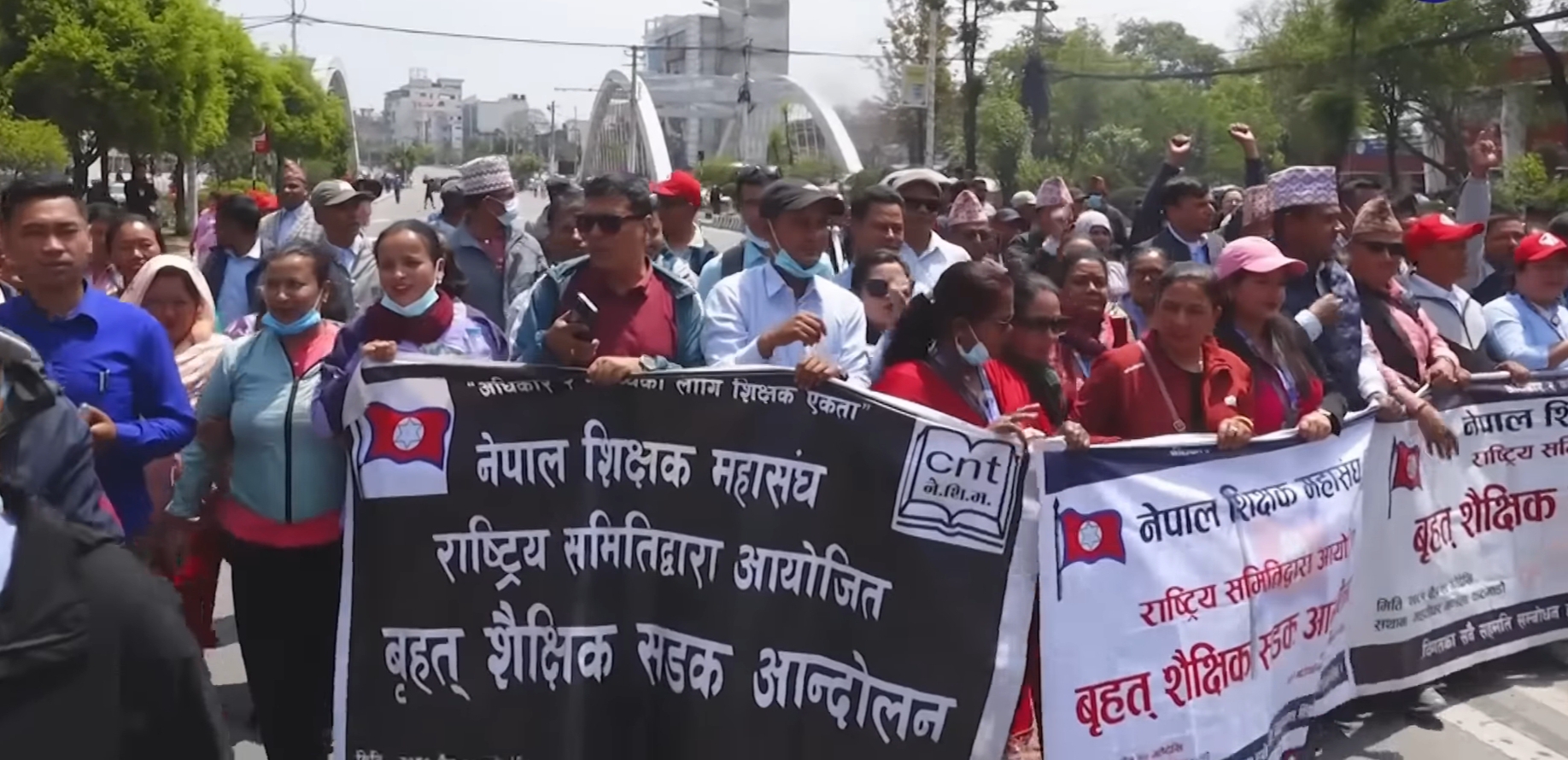Teacher’s Protest in Kathmandu Continues But Who Are the Silent Victims?

Kathmandu – Since April 2, 2025, Kathmandu has become an epicenter of significant movement as thousands of teachers from across the country have gathered in the capital, abandoning their schools to demand one thing: the immediate passage of the long-stalled School Education Bill. The protest led by Confederation of Nepali Teachers (CNT) in Kathmandu, now entering in its third week is becoming more and more concerning.
The roots of the protest lie in the government’s repeated failure to fulfill its promise. In September 2023, the government signed a six-point agreement with the teachers, assuring them that their key concerns would be addressed in the upcoming education law. But in the months that followed, the bill languished in bureaucracy, and none of the agreed-upon reforms materialized. With no alternative, teachers launched a mass protest, marching to Kathmandu setting up sit-ins, and protest camps at major government sites — including Maitighar Mandala and Singha Durbar.
Their demands are deeply tied to structural problems within Nepal’s school system. Public school teachers — many of whom are employed temporarily have long suffered from insecure job status, uneven pay structures, and political interference in transfers and promotions. They are seeking a law that standardizes appointments, secures employment benefits, ensures fair teacher distribution across provinces, and protects teachers’ professional rights.
But while teachers have taken to the streets, their absence has triggered widespread disruption for the very students they serve. Across the country, thousands of public schools have shut their doors. Over 514,000 students who appeared for the Secondary Education Examination (SEE) in March are now caught in limbo as protests have delayed the answer sheet evaluation process. If the strike continues, SEE results could be postponed indefinitely.
And the pressure is even more acute for Grade 12 students. The protests threatens to disrupt upcoming board exams and with board exams set to start from April 24, students are losing critical classroom time meant for revision and final preparation. As colleges have not finished their syllabus, many students are forced to self-study without any teacher’s to guide.
The protests have also deepened existing divides between public and private education. While private schools remain operational, public school students — many from low-income and rural backgrounds — are facing prolonged learning loss. The result is a growing inequality in academic preparedness and opportunity, with long-term consequences for equity and access in higher education.
In response to mounting pressure, the government has scheduled a special parliamentary session for April 25, where it is expected to table and debate the School Education Bill. While this move has offered a glimmer of hope, skepticism remains high. “We’ve been betrayed before,” said Rajendra Prasad Adhikari, a leader of the protesting teachers. “This time, we want action — not promises.”
And in this battle, the silent victims are the students. With exams uncertain, syllabus incomplete, and teachers absent, a generation of learners is being dragged into a political deadlock they neither caused nor can control.
